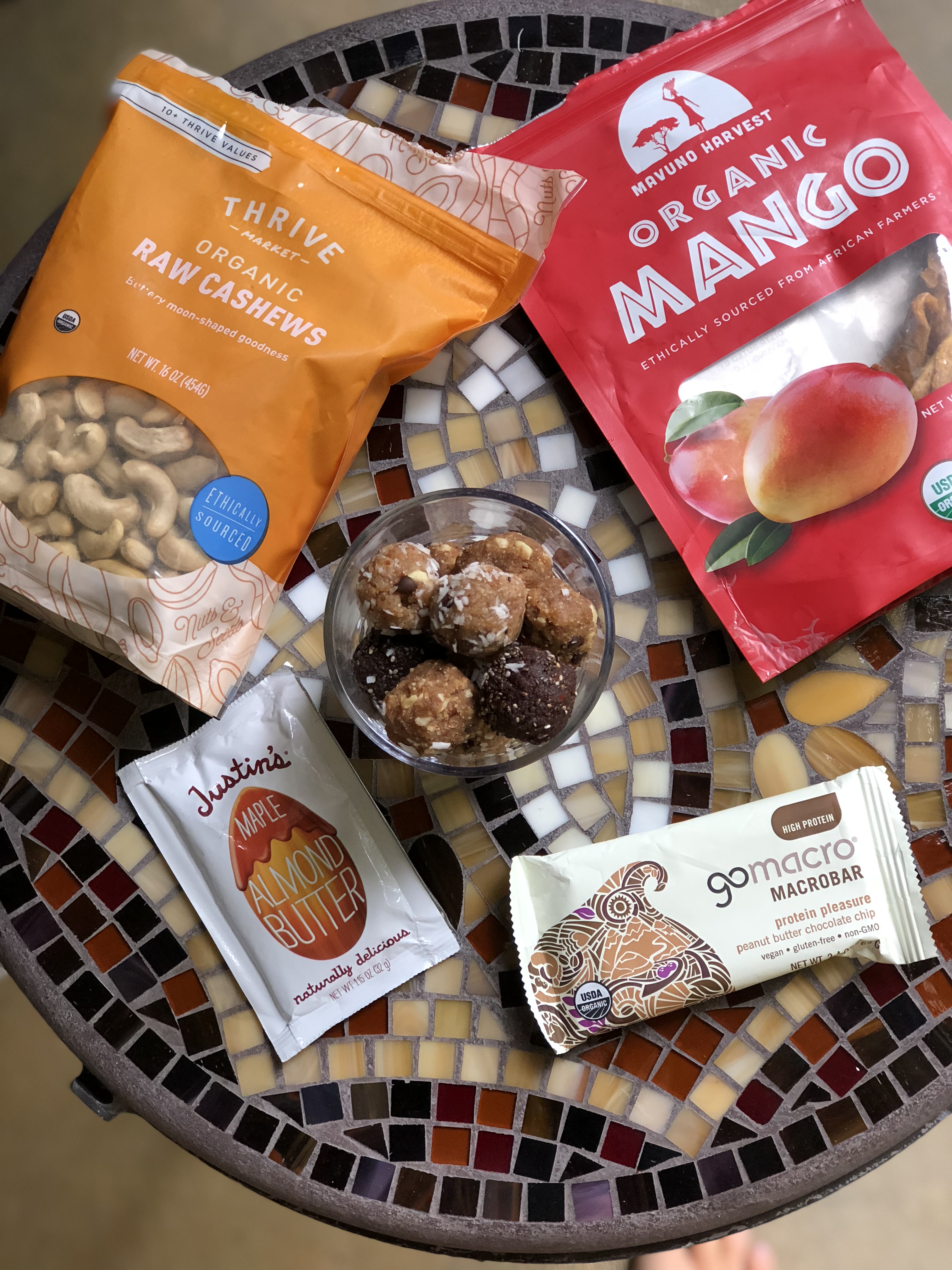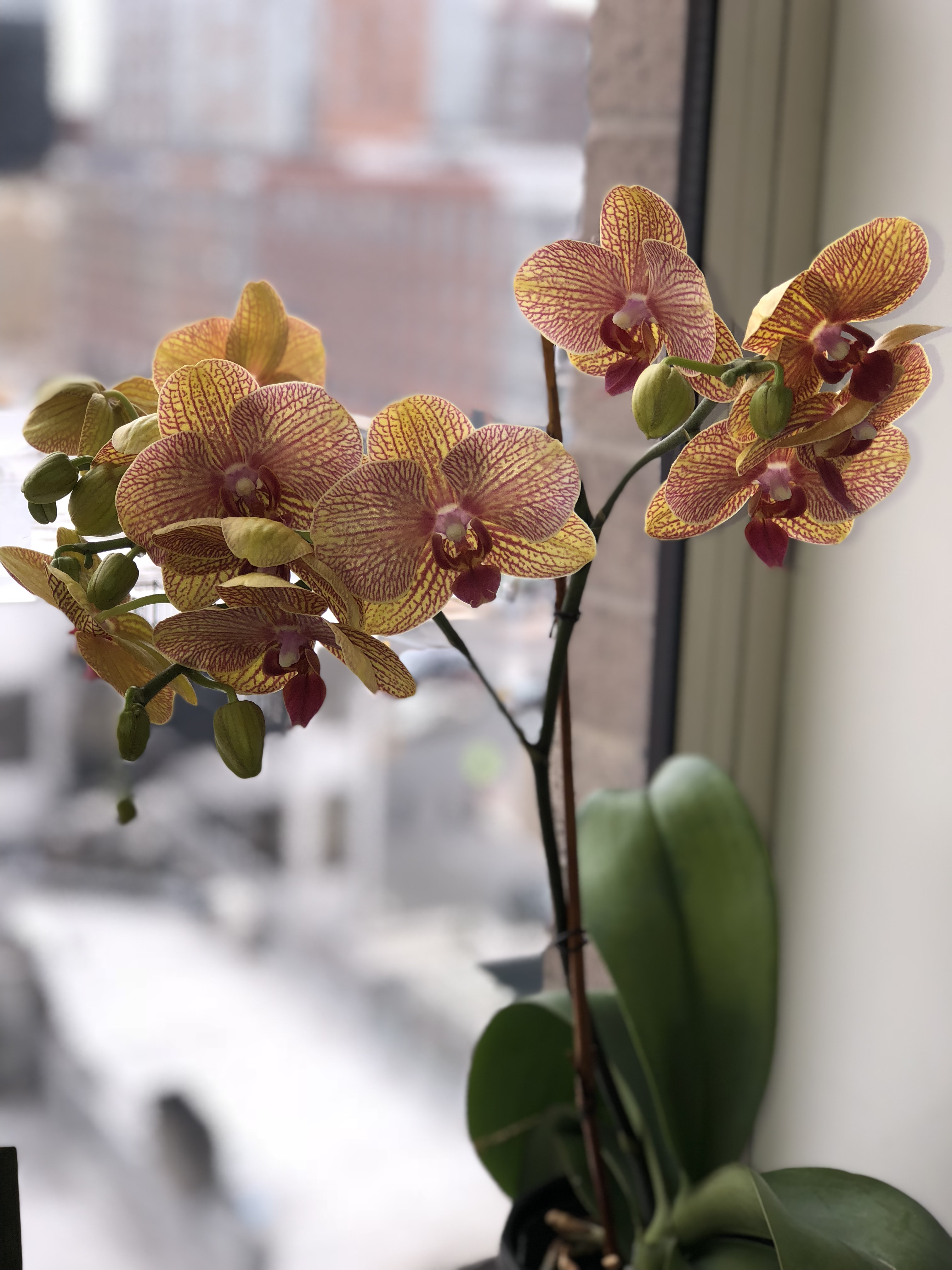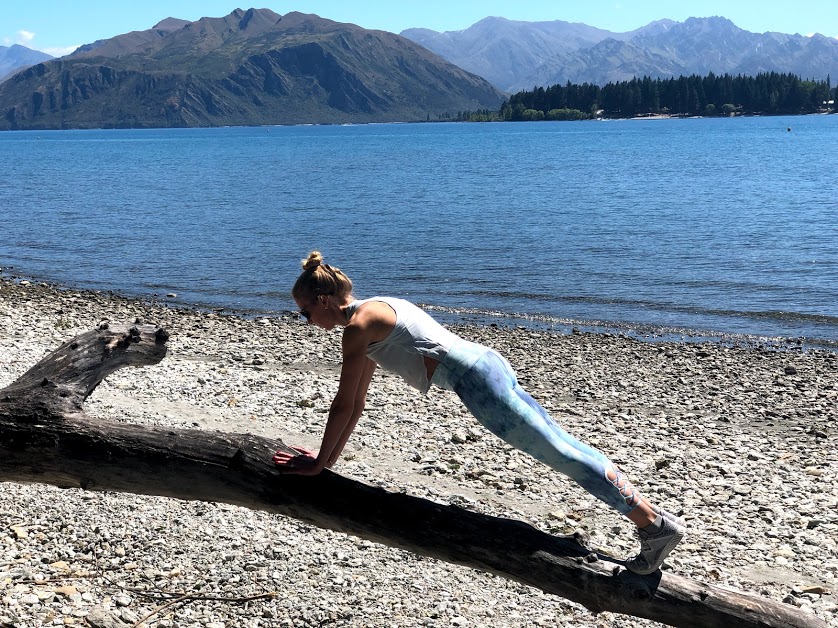
Happy Sunday everyone! I’m sure all of you have heard of the book “Everyone Poops” by Taro Gomi, which is used to help potty train toddlers. The reason I bring up the topic is because gut health is a very important part of your overall health, and I think many people are very uncomfortable talking about it. As part of being a health coach, gut health is something that I’m very cognizant of and will ask my clients every session how their stomach is feeling today or over the past week. Today I want to explain to you why your gut health is important, how it can enhance your overall wellness, and what little adapts you can start incorporating into your own life in order to maintain a healthy gut. I recently did this health seminar for ANAD Awareness week for my sister’s sorority, Delta Phi Epsilon, at Steven’s Institute for Technology and wanted to share it with all of you.
First off, why is your gut health important? Hippocrates stated over 2000 years ago that “All disease begins in the gut.” To give you some background, your gut is responsible for much more than just digesting your food. The microbiome, or your intestinal gut ecosystem, is critical to your overall health meaning that not only does it affect your digestive system, it impacts all systems in the body – including your skin and brain. In addition, 80% of your immune system is in your gut. This means that even if you eat healthy, exercise frequently, keep stress levels low, and get enough sleep – you still won’t feel well if your gut is out of balance. Even as a health coach, this is something that I’m constantly thinking about and battling. I know with everyone’s busy schedules between school, social life, and activities – it may be difficult to maintain a healthy gut. I also want to let you all know that there are things you can do to change your gut health without a doctor just telling you that you have “IBS.”
Now let’s talk about how the gut works. Your gut contains bacteria, or gut flora, which are symbiotic and pathogenic micro-organisms. The gut helps us to digest food, regulate hormones, help eliminate toxins, and produce vitamins. In order for your gut to perform all of these tasks, the bacteria must be in balance. The body is protected by a lining that acts as a barrier to the toxic environment in your gut. If that lining is damaged, the toxins can leak into your body, often called “leaky gut syndrome” and it can cause low grade or chronic inflammation in the body. Everyone’s body responds differently to inflammation, but it can manifest itself as acne, fatigue, mood swings, etc. For me personally, if my gut is out of balance, I will get inflammation in the form of acne/red skin. As I mentioned earlier, since the gut is responsible for elimination of toxins you need to make sure that they are actually exiting the body. This is why it can be detrimental to your health if you get constipated or “backed up”. As a rule of thumb, everyone’s bowel movements vary and can be as frequently as 3 times per day or 3 times per week.
What are some common signs of a gut imbalance? They can include:
- Low energy
- Skin Issues like rosacea, eczema, or acne
- Weight gain
- Cravings
- Mood swings
- Depression/anxiety
- Low immunity/frequently getting sick
- Food allergies/intolerances/sensitivities, Celiac disease
- Digestive Issues
- Autoimmune disease
- Diabetes
Now that we understand why gut health is important, how the gut works, and what are some common signs, let’s talk about some little adapts you can start incorporating in your everyday life to maintain a healthy gut.
1. Stay hydrated
One of the number one reasons why people have digestive issues or tend to be backed up are due to not drinking enough water on a daily basis. To make you feel better, staying hydrated is something that I constantly have to remind myself to do everyday. I even have a sticky on my computer at work that says “drink water” just so I’m reminded to drink more water, more frequently. I also highly recommend coconut water which hydrates you faster than water and gives you extra electrolytes.
2. Prebiotics/Probiotics
I’m sure these are buzz words you have all heard of before, but what are prebiotics and probiotics? Prebiotics help to promote the growth of the gut flora already in your gut. Probiotics are live bacteria and yeasts that you take as a supplement to add more “good” bacteria back into your gut. I take a probiotic daily and the prebiotic I add to my smoothies at least once per week. As a rule of thumb, your probiotics should have between 1-10 billion CFUs (Colony Forming Units). Also note that if you have recently taken antibiotics, then you definitely want to start taking probiotics as antibiotics strip out all of the good and bad bacteria in your gut.
3. Digestive Enzymes
Digestive enzymes are produced in the pancreas and small intestine and break down our food into nutrients so that our body can absorb them. If you have poor digestion, this could be due to a lack of sufficient digestive enzymes. You can start taking them regularly to help aid in digestion and absorption of nutrients. I would recommend a digestive enzyme that has multiple enzymes, including lactase (to break down milk), lipase (to break down fats), amylase (to break down carbohydrates), cellulase (to break down fiber), and protease (to break down protein).
4. Kombucha
As I mentioned, I am a brand ambassador for Health-Ade Kombucha. To start off with, what is kombucha? Kombucha is a fermented tea that contains naturally occurring probiotics and healthy organic acids. Health-Ade is my favorite because they have amazing flavors that come from organic, fresh pressed juices, the kombucha is not “fake fermented”, and it’s the cleanest kombucha on the market as all of the fermentation is done in glass to prevent leaching from plastic or metal. I love drinking kombucha on a regular basis (for me it’s usually a few times per week) as it’s another source of probiotics that keeps my gut in check. I also drink it when I’m starting to feel run down as it provides B12 and boosts your overall immunity. (Note: It can be used as a mixer for cocktails!)
5. Fermented Plant-Based Foods
Just like kombucha which is fermented, you can also find naturally occurring probiotics in fermented foods. Examples are:
- Sauerkraut – It’s made from cabbage and salt.
- Kimchi – It is similar to sauerkraut, except that it’s spicy and often used in Korean cuisine.
- Tempeh – Naturally fermented soybeans. Often used as a protein for vegans/vegetarians.
- Soy sauce – I’m sure you’ve all had soy sauce, which is made from a fermented paste of boiled soybeans, roasted grain, brine, and Aspergillus oryzae.
- Miso – A fermented paste made from barley, rice or soybeans. You have probably heard of miso soup in Asian cuisine.
- Yogurt that has the label for “live & active cultures”
- Kefir – It’s a fermented milk or water based drink; similar to a drinkable yogurt.
Hope you all enjoyed this segment! Please reach out with any questions or comments. Have a great Sunday!
 With that being said, the moral of the story is to learn what your body needs and how best to support optimal health with food. I don’t force my clients to eat plant-based if they prefer protein, but I help them get comfortable with including at least 1 plant based meal into their diet per week. I find that this is very necessary as the average person is not getting enough fruits and vegetables. A mostly plant based diet can benefit you by providing you with more antioxidants + vitamins, assist with weight loss, decrease risk of diabetes + heart disease, and decrease inflammation. I think most people are concerned that they will not be getting enough protein in their diet. Here are examples of plant based protein sources you can add to your meals:
With that being said, the moral of the story is to learn what your body needs and how best to support optimal health with food. I don’t force my clients to eat plant-based if they prefer protein, but I help them get comfortable with including at least 1 plant based meal into their diet per week. I find that this is very necessary as the average person is not getting enough fruits and vegetables. A mostly plant based diet can benefit you by providing you with more antioxidants + vitamins, assist with weight loss, decrease risk of diabetes + heart disease, and decrease inflammation. I think most people are concerned that they will not be getting enough protein in their diet. Here are examples of plant based protein sources you can add to your meals:





 For my face, I wash it every night with the
For my face, I wash it every night with the 
 Happy Hump day, everyone! For most of you that may already know me, know that I am 100% dairy-free. The reason I bring up this topic up is that many people have some sort of dairy allergy or suspect that they have a dairy allergy due to a skin or digestion issue. This is when they come to me and ask for help. I want to break it down simple for everyone that way whether it’s yourself or a friend who is dairy-free, you know what that means and what things you need to look out for when buying groceries or eating out. In addition, I want to be honest and say that in my opinion dairy-free is much harder than being gluten-free. Typically, I’ve noticed that these two allergies go hand in hand, but they make a lot more gluten-free products than they do dairy-free (not all of them being healthy, but nevertheless are free of gluten). Lastly, I want to highlight that 4 years ago that I was a HUGE dairy eater as I loved ice cream, cheese, pizza (all the good stuff!) but had to give it up as a result of cystic acne and bad digestion. I’m here to tell you that while it can be difficult in the beginning, I promise you can do it and it will definitely be worth getting rid of those painful symptoms. In addition, don’t beat yourself up if in the beginning you go cold turkey and then find yourself having that piece of cheese two weeks later. It took me a very long time to have the self control and find dairy-free alternatives I truly loved because I knew in the end it wasn’t worth the pain I was going through.
Happy Hump day, everyone! For most of you that may already know me, know that I am 100% dairy-free. The reason I bring up this topic up is that many people have some sort of dairy allergy or suspect that they have a dairy allergy due to a skin or digestion issue. This is when they come to me and ask for help. I want to break it down simple for everyone that way whether it’s yourself or a friend who is dairy-free, you know what that means and what things you need to look out for when buying groceries or eating out. In addition, I want to be honest and say that in my opinion dairy-free is much harder than being gluten-free. Typically, I’ve noticed that these two allergies go hand in hand, but they make a lot more gluten-free products than they do dairy-free (not all of them being healthy, but nevertheless are free of gluten). Lastly, I want to highlight that 4 years ago that I was a HUGE dairy eater as I loved ice cream, cheese, pizza (all the good stuff!) but had to give it up as a result of cystic acne and bad digestion. I’m here to tell you that while it can be difficult in the beginning, I promise you can do it and it will definitely be worth getting rid of those painful symptoms. In addition, don’t beat yourself up if in the beginning you go cold turkey and then find yourself having that piece of cheese two weeks later. It took me a very long time to have the self control and find dairy-free alternatives I truly loved because I knew in the end it wasn’t worth the pain I was going through.
 Happy Sunday everyone! I’m sure all of you have heard of the book “Everyone Poops” by Taro Gomi, which is used to help potty train toddlers. The reason I bring up the topic is because gut health is a very important part of your overall health, and I think many people are very uncomfortable talking about it. As part of being a health coach, gut health is something that I’m very cognizant of and will ask my clients every session how their stomach is feeling today or over the past week. Today I want to explain to you why your gut health is important, how it can enhance your overall wellness, and what little adapts you can start incorporating into your own life in order to maintain a healthy gut. I recently did this health seminar for ANAD Awareness week for my sister’s sorority, Delta Phi Epsilon, at Steven’s Institute for Technology and wanted to share it with all of you.
Happy Sunday everyone! I’m sure all of you have heard of the book “Everyone Poops” by Taro Gomi, which is used to help potty train toddlers. The reason I bring up the topic is because gut health is a very important part of your overall health, and I think many people are very uncomfortable talking about it. As part of being a health coach, gut health is something that I’m very cognizant of and will ask my clients every session how their stomach is feeling today or over the past week. Today I want to explain to you why your gut health is important, how it can enhance your overall wellness, and what little adapts you can start incorporating into your own life in order to maintain a healthy gut. I recently did this health seminar for ANAD Awareness week for my sister’s sorority, Delta Phi Epsilon, at Steven’s Institute for Technology and wanted to share it with all of you.